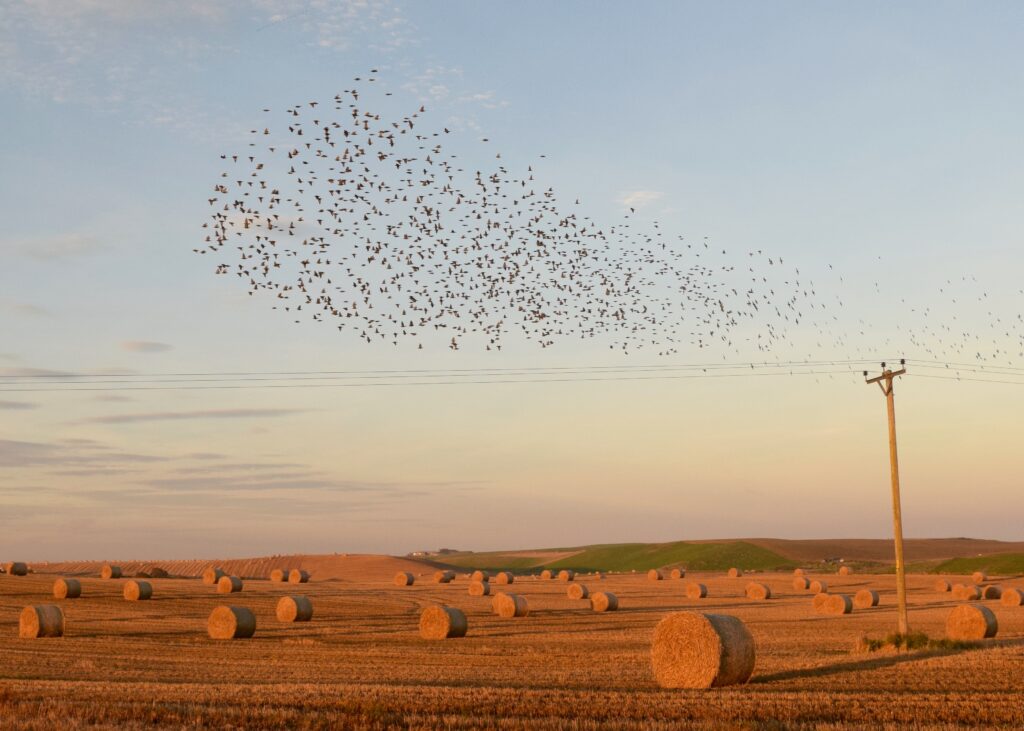During the migration seasons, the skies over parts of Europe come to life with an exceptionally beautiful and mysterious display of nature’s enigmatic rhythms. Starling murmurations. European Starlings, in flocks numbering in the hundreds of thousands, twirl and wheel through the sky in a strange sort of unison; their movements resembling one enormous animal rather than a crowded flock of small ones. This is a most impressive and hypnotic example of a phenomenon that can be seen in much smaller groups of birds.
Related Article: The Ivory-billed Woodpecker Escapes the Extinct List Again — But Are They Really Out There?
Flocks seem to be governed by an invisible force that holds them together. They move in almost supernatural unison. When one bird is startled on the far side of a flock, the information that danger may be near ripples through the entire group seemingly instantaneously. A bird that has not seen the approaching danger will take flight along with its companions, resulting in a flock that reacts to danger with a surprising degree of consensus. This has long fascinated birdwatchers, scientists, and curious thinkers.
A new study has proposed that the answer may, at least in part, be due to physics as well as behavior. The study models bird flocks using, of all things, beads. Despite being inanimate, these electrified plastic beads “behave” in ways that reflect the dynamics of flocking.
This “microbeads,” smaller than the width of a human hair by ten times, were placed in a circular well beneath a microscope and moved in a fixed speed in a random direction. Under these conditions, the beads were observed to form a “flock” and move as a collective. What really surprised researchers, though, was the beads’ apparent ability to “self-sort.” When a bead of a different size was introduced, the smaller beads would naturally collect in the middle and the larger ones would group up on the edges, naturally separating the “flock” by size. A mathematical model developed to help researchers understand this phenomenon found that speed was a bigger factor than size with regards to sorting.
Plastic beads and flesh-and-blood birds are obviously a very different story, but the findings of this study may help future researchers better understand the math and physics behind flocking and the “collective action” that occurs within large groups of animals. The “sorting” behavior of the beads may inform future research with regards to flocks of varied species and the way they navigate the world.
Popular Article: Parakeets Have a “Vocal Fingerprint” That Others Recognize

